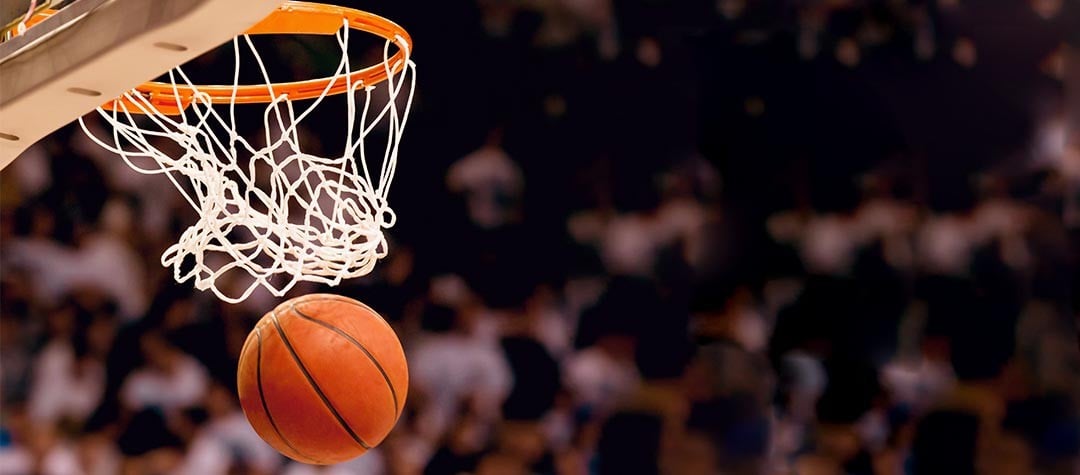Get a firm grasp of rules with the help of our quick roundup of the rules of basketball.
Length of a basketball game
-
The basketball game consists of four quarters of 10 minutes each.
-
Teams play one-way for two quarters, the other way for the next two.
-
There is a two-minute interval between the first and second period, and also between the third and fourth period, with 15 minutes for halftime.
-
Coaches can call two one-minute timeouts at anytime during the first half and three timeouts in the second half.
-
The clock stops when the referee's whistle blows. It stays stopped if free throws are being taken and starts again when the ball touches a player on court — so you get a full 40 minutes of actual basketball play.
Time limits in basketball
There are also time limits on a player in possession of the basketball with five main rules:
24-second rule
After a team gains possession of the ball, they have 24 seconds to shoot. Possession is handed to the other team if they fail to do so.
8-second rule
When a player has the ball in their own half or ‘backcourt’, they have 8 seconds to move the ball over the halfway line into the ‘frontcourt’. Otherwise they will lose possession.
5-second rule
A closely guarded player holding the ball has 5 seconds to either pass or advance the ball toward the hoop. When called, possession of the ball goes to the opposite team.
3-second rule
A player can only be in the opposition's rectangular ‘key’ area under the basket for 3 seconds. A foul will be called if the player does not leave within those 3 seconds.
Types of basketball infringement
Basketball players can be penalised for making an infringement or foul on another player, with the loss of possession or the award of a ‘free throw’.
-
Personal foul — this is when illegal body contact occurs between opposing players. Common examples are charging, blocking, holding, illegal guarding, pushing, illegal screening, hand checking, and illegal hand use. A personal foul results in either a player taking free throws or a team losing possession of the ball.
-
Charging — called by the official when an attacking player moving with the ball runs straight into a defender.
-
Blocking — a defensive player may not stand in the way or ‘block’ a dribbling player unless that defender has established a legal guarding stance.
-
Holding — this is when personal contact is made with an opponent to slow their movement.
-
Illegal guarding — when a defending player bumps into an opponent from behind.
-
Pushing — this is exactly as it sounds, and applies even when a player does not have possession of the ball.
-
Illegal screening — an attempt to slow down or stop an opponent who does not have control of the ball.
-
Hand checking — when a defending player uses their hands to grab or slow an opponent.
-
Illegal hand use — when contact is made on an opponent when they are attempting to release the ball.
Other types of basketball infringement include:
-
Technical foul — these are awarded against any player or coach for unsportsmanlike behavior such as swearing or arguing with a referee. This leads to at least one free throw and possession of the ball. If a player or coach receives two technical fouls, he or she is removed from the game.
-
Persistent fouling — this can lead to a player being removed from the game. If a player commits five fouls they must leave the game permanently, but can be substituted.
-
Team foul — this is called when a team has committed five fouls of any kind in any one period. The opposing team is awarded with two free throws.
-
Violation — a violation of the rules covers such things as an illegal dribble or not releasing the ball within the specified time limits. Possession is handed to the opposition.
-
Backcourt violation — an attacking player with the ball may not cross back over the halfway line once he or she has advanced the ball beyond it.
Basketball scoring
The scoring and points system of basketball comprises the following -
The number of points scored by a shot depends on the position of the player when they release the ball.
-
Outside the three-point line (3pts) — the highest number of points that can be achieved is when a basket is scored from outside the three-point line.
-
Inside the three-point line (2pts) — any basket shot inside the line earns two points.
-
Free throw (1pt) — a free throw from the free-throw line is worth one point. It is an unchallenged shot at the basket, awarded after a foul by the opposition.
Types of basketball shot:
-
Jump shot — a shot performed while jumping in the air. The ball is released at the highest point off the ground, and is often used when shooting over a defender trying to block the ball.
-
Lay-up — a shot when a player moves to the basket with the ball and rolls it off his or her fingertips into the basket.
-
Bank shot — a shot in which the ball touches the backboard before it goes into the hoop.
-
Dunk (or Jam) — a player slams the ball into the basket from jumping into mid-air.
-
Hook shot — a one-handed shot with the shooter facing sideways to the hoop and arcing the ball over the defending player to score.
-
Free throw — a free shot taken from the foul line as the result of a foul.














